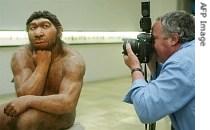
Scientists have managed to sequence a partial draft of the genetic code of the Neanderthals. They had 99.5% to almost 99.9% of their coding in common with modern humanity. That's a pretty significant find.
The achievement demonstrates the feasibility of determining the entire genetic makeup of Neanderthals, as well as other extinct species, using DNA from fossils, the researchers said. The draft includes less than 1 percent of the DNA from a 38,000-year-old Neanderthal fossil, but the researchers said they expect to have a complete draft in two years.Read on to find out how they got this DNA data.
An analysis of the partial DNA code shows that Neanderthals separated from the human line about half a million years ago, according to the team of German and American scientists. The team said it found no evidence to support a controversial theory that Neanderthals and ancient humans mated.
But the greatest significance of the announcement, other researchers said, is that it shows that the science of ancient genomics -- once solely the stuff of fiction like "Jurassic Park" -- has arrived. A genetic understanding of the Neanderthals, who made sophisticated tools and buried their dead, could reveal details like the color of their hair and perhaps whether they could speak. And it would allow researchers to identify the final, crucial genetic changes, long after the split with chimpanzees, that set humans apart and allowed their ancestors to prosper while Neanderthals died out.
"It is an amazing thing to be able to reconstruct the genome of an ancient organism," said David Reich , a genetics specialist at Harvard Medical School who was not involved in the research. "What they have done is an incredibly important technical achievement."
The research, published jointly by the journals Nature and Science, is also a testament to teamwork and sheer persistence. The scientists painstakingly examined some 70 Neanderthal bones in various collections before finding one -- recovered by paleontologists in a Croatian cave -- without too much contamination and with enough viable DNA.

No comments:
Post a Comment